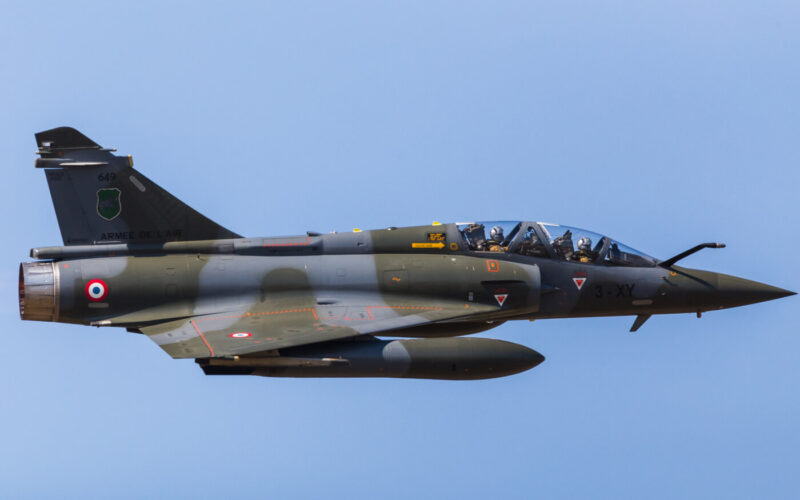The Bureau of Enquiry and Analysis for State Aviation Safety (BEA-É) published its final report regarding the crash of a French Mirage 2000D during a low-altitude training flight in January 2019, that killed two flight crew members.
On January 9, 2019, two Mirage 2000D fighter jets of the Fighter Squadron 1/3 Navarre took off from Nancy-Ochey 133 Air Base, in the east of France. The low altitude flight training mission was taking place over the Doubs, on the edge of the Jura Mountains. The weather conditions at the time were deemed difficult, with almost no visibility in some areas.
After 10 minutes of terrain-following flight (SDT), the first fighter jet, “Coca 26”, successfully performed its firing-run aimed at simulating the launch of a SCALP cruise-missile. Five minutes later, the second aircraft, “Coca 27”, was engaged in its own SDT when it hit the ground near the village of Mignovillard. The pilot attempted to eject, but too late. Both he and the navigator were killed on impact.
Pressure of “optimized training”
The investigation rules out a technical problem or a bird strike, as nothing in the wreckage indicated a malfunction. For the investigators, the most likely cause for the lack of stabilization at a safe altitude appeared to be the spatial disorientation of the crew. However, as the flight data recorders were destroyed in the crash, other scenarios cannot be ruled out.
Contributing factors, though, were clearer for the investigators. The report points to a lack of training for the 3rd Fighter Wing, which has endured several years of organic training deficit due to high engagement on operational theaters and low availability of the Mirage 2000D. “This lack of training led to an attempt to optimize each flight,” says the BEA-É, adding that “over the years, training has become increasingly dense.”
The optimization directs pilots to acquire as many skills as possible, instead of maturing those they already possess. The investigation revealed that the pilot had been qualified for a year and a half, but had carried out this type of mission only seven times and probably never in such weather conditions. That situation creates an environment where pilots feel pressured by the judgment of another experienced pilot and do not voice their concerns regarding an unadapted flight plan.
The BEA-É investigation has established that the crew was still inexperienced for this type of mission and the training was their “recovery” flight, as both of them had just returned to service after some time on leave. It is noted that a very low altitude flight is “technically difficult, and even more so when the weather conditions are bad”, which gives almost no room for error.
In addition to making sure that pilots from the 3rd Fighter Wing receive sufficient training, the BEA-É recommends the French Air Force to monitor individually the fundamental skills, including but not limited to SDT, to better adapt the complexity of training missions.
The Mirage 2000 is a multirole fighter jet developed by Dassault Aviation in the 1970s. The D (Diversified) variant is an updated version of the airframe with two seats. Based on the Mirage 2000N (Nuclear), which was the main nuclear strike platform of the French Air Force until 2018, the Mirage 2000D was designed for long-range precision strikes using conventional weapons. As for the nuclear role, it has since been taken over by the Rafale, another Dassault aircraft.

